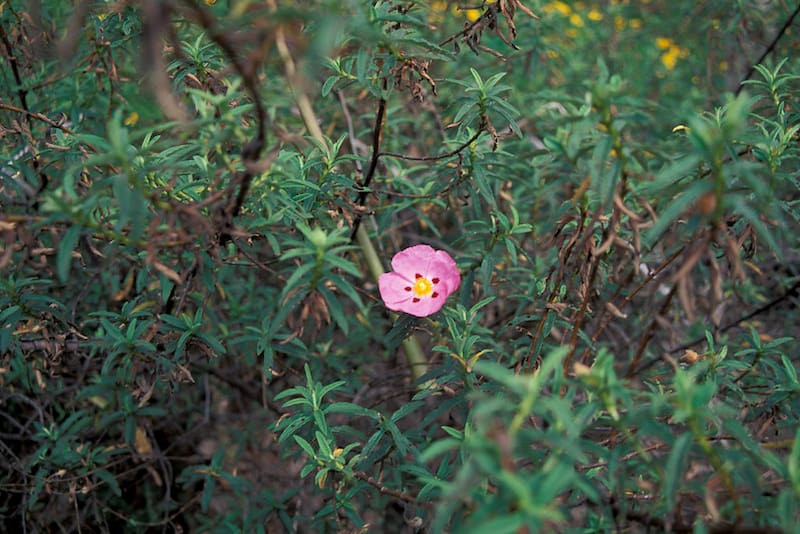The quintessential garrigue plant, the rockrose (Cistus) offers beautiful pink or white flowers continuously from May to July. This shrub, with its Mediterranean origins, is highly drought-resistant. It thrives in dry, stony, and poor soils as long as they are well-drained. Of course, the rockrose loves sunlight above all. Under these conditions, the hardiest varieties can withstand temperatures as low as -10 to -15°C. Whether grown in pots, flower beds, or rock gardens, the rockrose requires minimal maintenance. A simple trim after flowering is all it needs. This is also the perfect time to take cuttings from the rockrose. Discover step by step when and how to take rockrose cuttings.
Materials needed for rockrose propagation by cuttings
- A disinfected and sharp secateurs;
- An organic-approved rooting activator (facultative);
- An alveolate tray, a seedling box, conventional seedling pots, or biodegradable pots, or simple terracotta pots;
- Potting compost specifically for repotting and propagation by cuttings;
- Sand;
- A spray bottle;
- A cloche, mini greenhouse, plastic bottle, or simple plastic bag;
- A pen or stick.
When to take rockrose cuttings?
The ideal time to take cuttings from your rockrose is at the end of the flowering period, i.e., in July or August depending on the variety. By taking cuttings from an ageing, thinning rockrose, you’ll obtain new plants identical to the one you love so much.

Propagation by cuttings of the rockrose helps renew ageing shrubs that develop dead wood
To propagate the rockrose, the heel cutting technique is used.
Steps for taking rockrose cuttings
- Fill your chosen container with a mix of potting compost and cutting compost, adding a small amount of sand. Use two-thirds compost to one-third sand.
- Moisten the substrate by spraying.
- To take cuttings from your rockrose, identify a healthy lateral shoot from the current or previous year, 10–15 cm long, without flowers. It should have eyes and buds. Use the heel cutting technique: gently tear off a branch from the main stem, keeping a small segment of the main stem attached. Do not cut with secateurs but "pull" gently. This method increases success rates as the attached segment is rich in meristems, growth cells that promote rooting. The semi-hardwood cutting technique, used for other evergreen shrubs and bushes, is also effective: select vigorous, not overly tender shoots.
- Remove the lower leaves from your cutting, leaving the top 3–4 leaves. Trim the top of the shoot and halve the remaining leaves.
- Optionally, dip the base of the stem in a rooting activator or plant hormone.
- Make small holes in the substrate with the pen or stick.
- Insert the cuttings, burying them up to the leafy part.
- Firm the soil around the cuttings and water gently.
Your cuttings are now ready—just maintain them properly for healthy growth.

Detailed steps for a Cistus skanbergii cutting
Aftercare for rockrose cuttings
Place your cuttings in a warm spot, ideally between 15–20 °C, in the shade. To encourage rooting, cover the containers with a mini greenhouse, cloche, plastic bottle, or bag to maintain optimal humidity and warmth. Protect the cuttings from drafts.
Keep the substrate moist.
After 3–4 weeks of this enclosed propagation, roots should appear. Repot them in a mix of compost and sand to overwinter in a frost-free, bright location.
The following spring, transplant your rockrose cuttings into the ground in a sunny spot.
Further reading:
- Guide: propagation by cuttings and its various techniques
- Plant profile: Rockrose, Cistus: planting, pruning, and care
































Comments